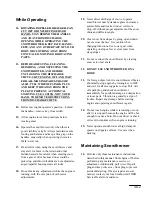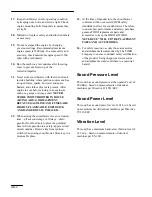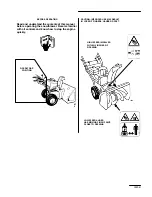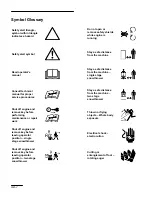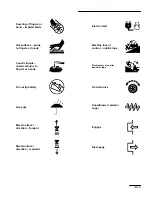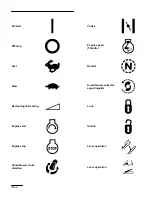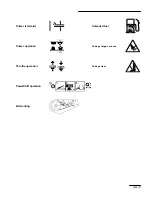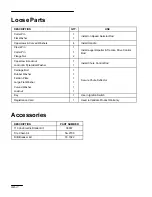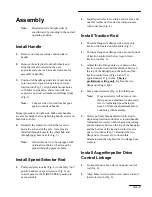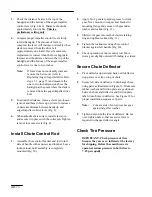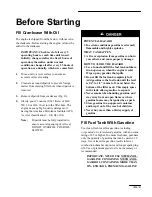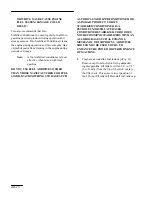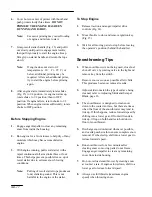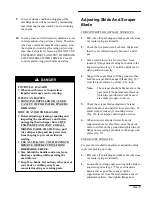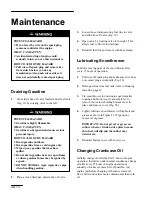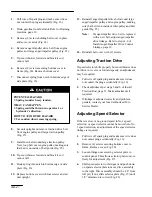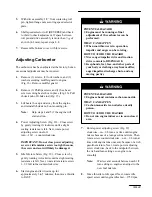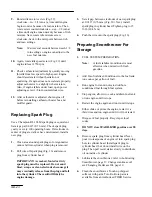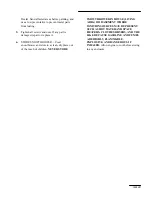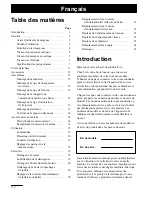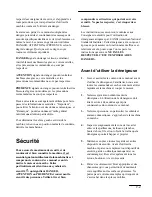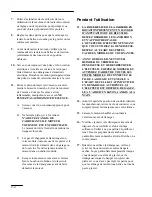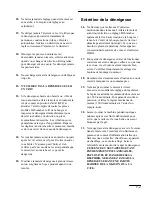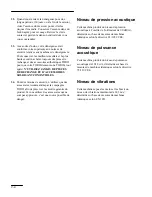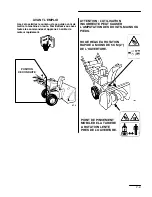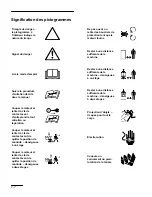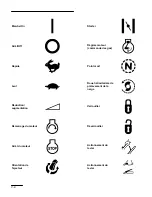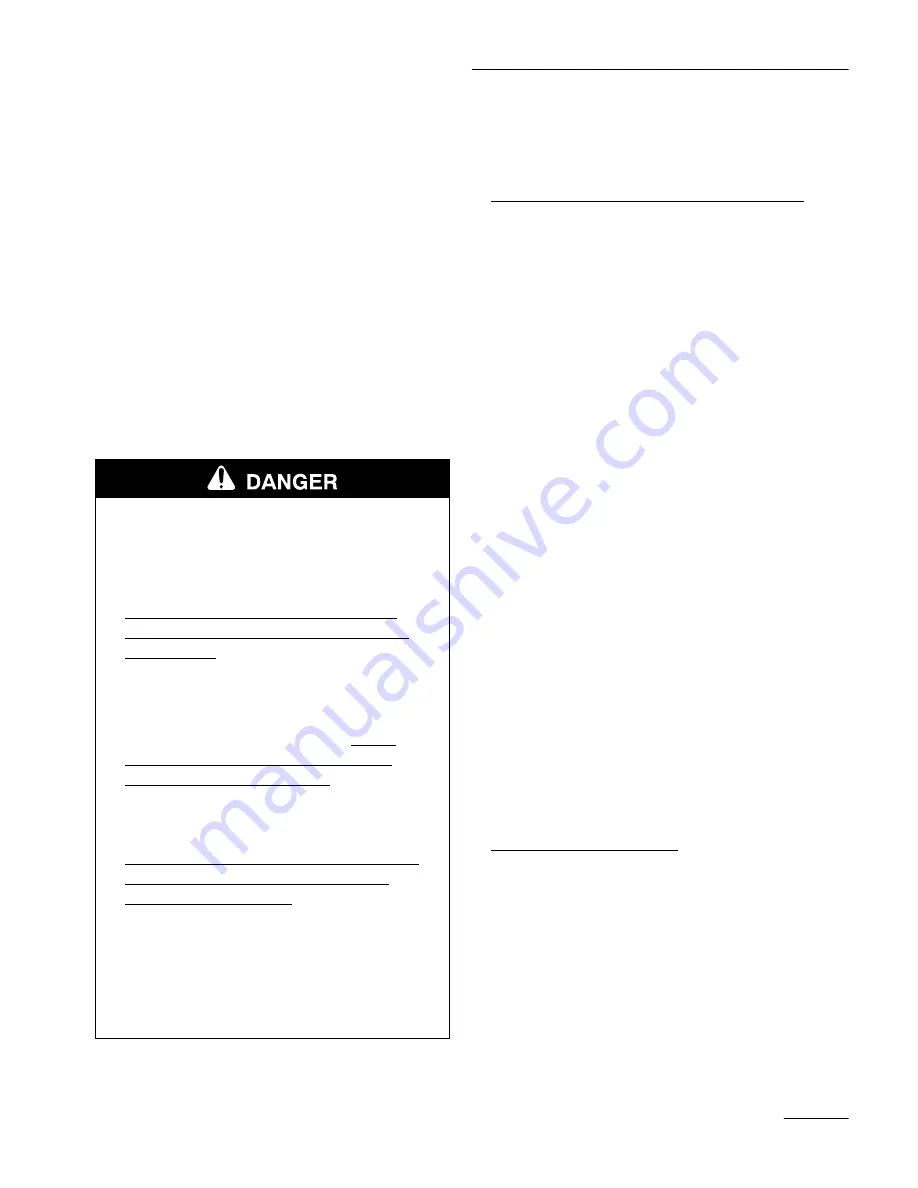
GB–18
9.
In wet or slushy conditions, clogging of the
discharge chute will be reduced by maintaining
maximum engine speed and by not overloading
the engine.
10. In some snow and cold weather conditions, some
controls and moving parts may freeze. Therefore,
when any control becomes hard to operate, stop
the engine and wait for all moving parts to stop;
then check all parts for freeze up. DO NOT USE
EXCESSIVE FORCE AND TRY TO OPERATE
THE CONTROLS WHEN FROZEN. Free all
controls and moving parts before operating.
POTENTIAL HAZARD
•
When snowthrower is in operation,
impeller and auger can be rotating.
WHAT CAN HAPPEN
•
ROTATING IMPELLER OR AUGER
CAN CUT OFF OR INJURE FINGERS
OR HANDS.
HOW TO AVOID THE HAZARD
•
Before adjusting, cleaning, repairing and
inspecting the snowthrower, and before
unclogging the discharge chute, SHUT
ENGINE OFF AND WAIT FOR ALL
MOVING PARTS TO STOP. Also, pull
wire off spark plug and keep wire away
from the plug to prevent accidental
starting.
•
USE A STICK, NOT YOUR HANDS, TO
REMOVE OBSTRUCTIONS FROM
DISCHARGE CHUTE.
•
Stay behind the handles and away from
discharge opening while operating the
snowthrower.
•
Keep face, hands, feet and any other part of
your body or clothing away from
concealed, moving or rotating parts.
Adjusting Skids And Scraper
Blade
FOR CONCRETE OR ASPHALT SURFACES
1.
Pull wire off spark plug and make sure wire does
not contact plug accidentally.
2.
Check the tire pressure in both tires. Make sure
that they are inflated equally between 7 and 15
psi.
3.
Move snowthrower to a level surface. Next,
loosen (4) flange nuts securing both skids to the
auger side plates (Fig. 17) until the skids can be
slid up and down easily.
4.
Support the auger blades off the ground so that
both the scraper and the auger blades (Fig. 18)
clear the level surface by at least 1/16 inch.
Note:
The scraper should be higher above the
pavement if the pavement surfaces on
which the snowthrower will be used
are cracked, rough or uneven.
5.
Check the scraper blade adjustment. Scraper
should be above and parallel to level surface. To
adjust scraper, loosen (5) mounting screws
(Fig. 18), level scraper, and retighten screws.
6.
When scraper is adjusted correctly and is
supported above level surface, move the skids
down to sit flat on the ground and tighten the (4)
flange nuts securing both skids to the auger side
plates (Fig. 17).
FOR GRAVEL SURFACES
For gravel or crushed rock surfaces, adjust the skids
to prevent picking up rocks.
1.
Pull wire off spark plug and make sure wire does
not contact plug accidentally.
2.
Loosen the (4) flange nuts securing both skids to
auger side plates (Fig. 17). Next, slide skids
down as far as possible so auger will be
supported as far from the level surface as skid
adjustment allows; then tighten flange nuts.

